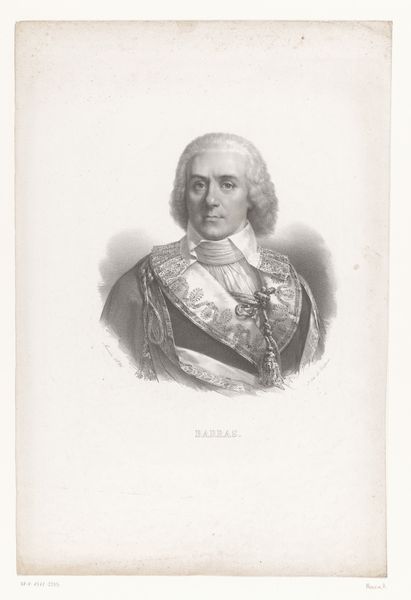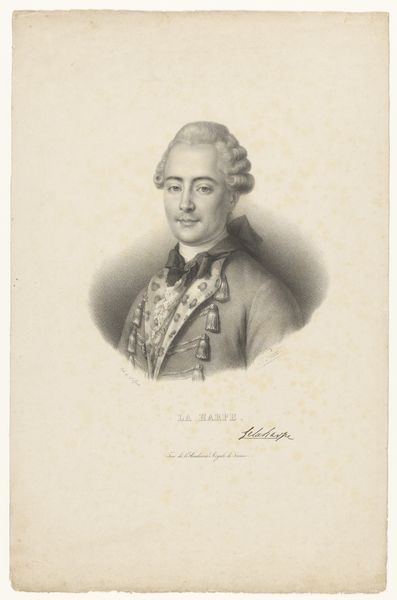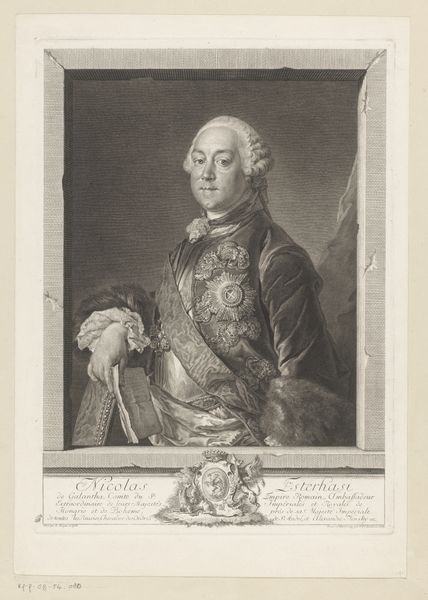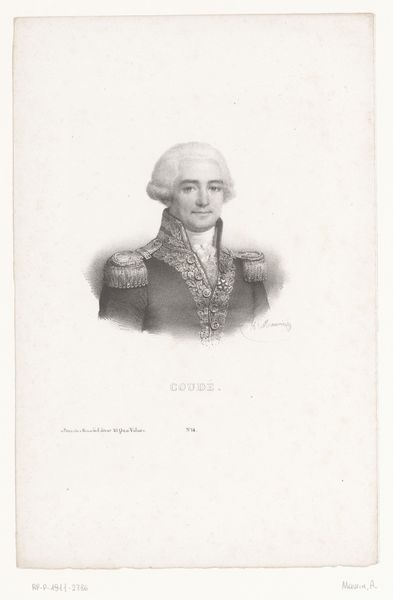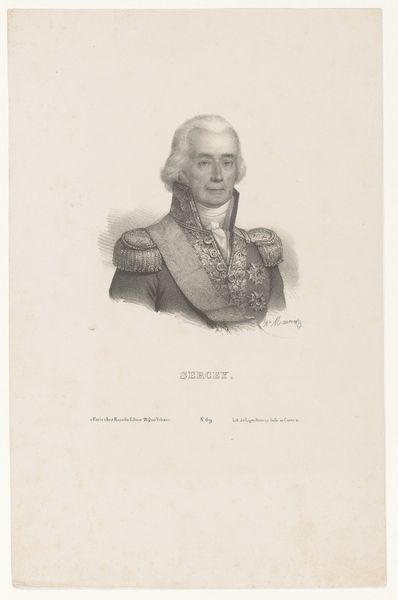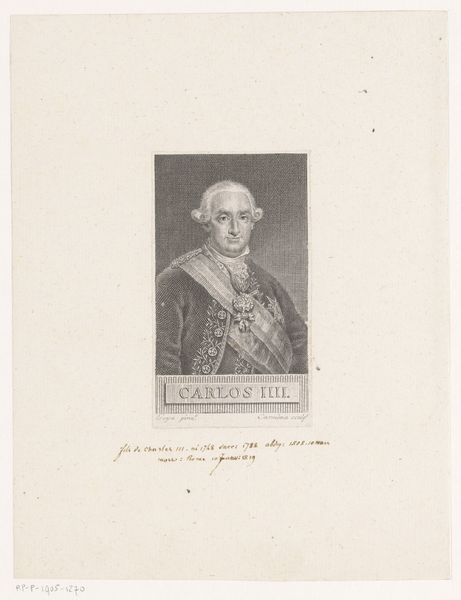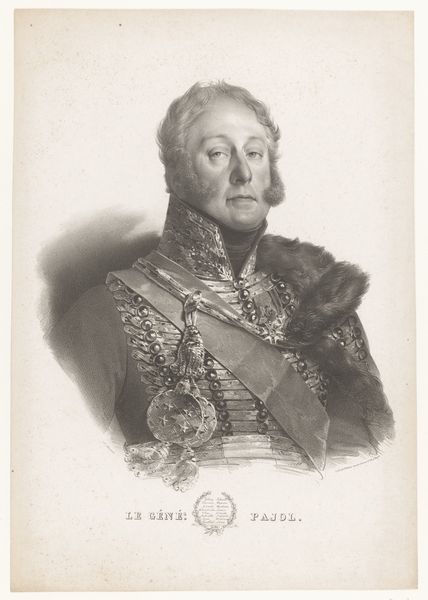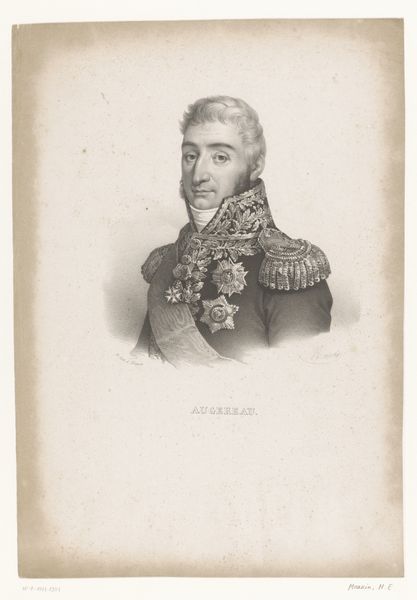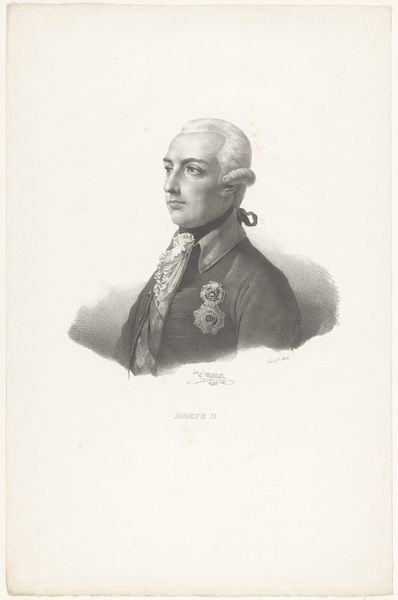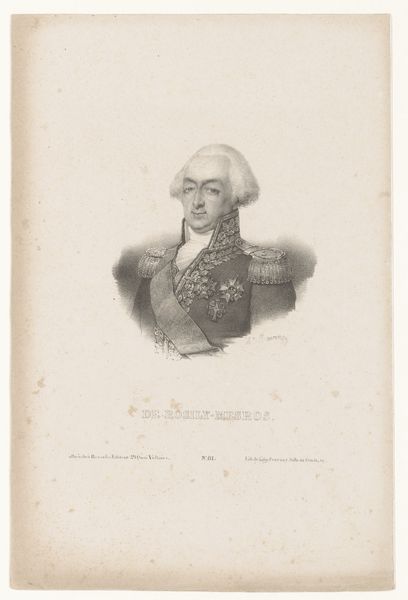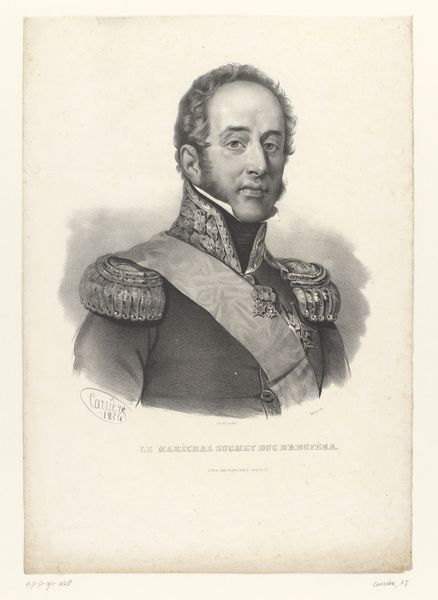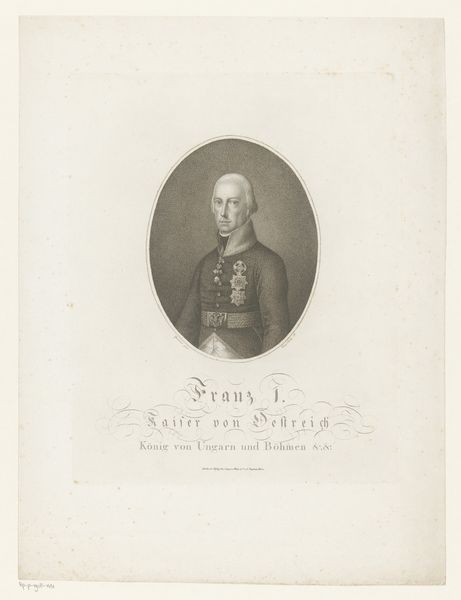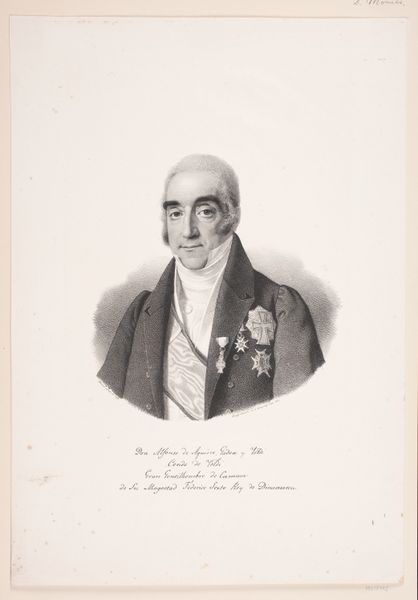
engraving
#
pencil drawn
#
neoclacissism
#
pencil sketch
#
old engraving style
#
pencil drawing
#
history-painting
#
academic-art
#
engraving
Dimensions: height 460 mm, width 321 mm
Copyright: Rijks Museum: Open Domain
Curator: Here we have Nicolas Maurin's portrait of François de Franquetot de Coigny, the Duke of Coigny, dating from sometime between 1827 and 1852. Editor: Whoa, imposing! The man's a fortress, really, with all those decorations—like visual white noise almost. All I see at first is glitz, yet he still appears severe. Curator: Indeed. Observe the intricate details rendered by the engraving technique, especially the minute details of the military garb. Maurin uses line and tone to meticulously define the Duke’s status through sartorial representation, aligning it directly with the conventions of Neoclassical portraiture. Note also how the face, despite the idealization, captures something of his character. Editor: Absolutely. But to my eye, all those sharp lines, like hatched steel, contribute to an emotional austerity, even if that severity was unintended. There is an undeniable weight of history sitting squarely on those shoulders. One also gets a sense that his entire performance of authority and prestige seems both flawless and brittle. Curator: Perhaps, though such details also reflect the style of the era, attempting to project ideals of power and nobility. Consider how the careful gradations of light and shadow articulate musculature. It enhances that very real sense of dignity that the piece intends to convey. This dignity is underscored by the precise articulation of space via crosshatching and stippling techniques, to capture detail without color. Editor: I hear that. Still, the portrait projects so much formality and... controlled intensity? Almost like it's daring you to question his authority! Also, for something that probably meant to inspire confidence, this old engraving gives off real vibes of a society in decline! Maybe it's all the finery juxtaposed against this dude’s thousand-yard stare. Curator: I can appreciate how you feel this, especially since engraving emphasizes rigidity, but in essence, the work serves as an example of technique that adheres closely to the conventions of academic art to show prominence through careful and clear visual articulation. Editor: I'll concede you that, but still get a sense this Franquetot, if alive today, might have needed therapy. Curator: An intriguing thought; well, perhaps art invites these projections, however tangentially related, enriching the historical understanding along the way. Editor: Absolutely, and honestly? I now kinda get that history too—a little better for his story laid bare across a two-century divide.
Comments
No comments
Be the first to comment and join the conversation on the ultimate creative platform.
